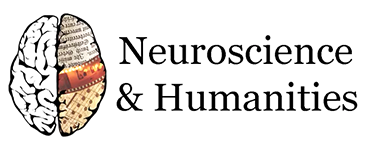NHS 2019 Abstracts
DOWNLOAD ALL ABSTRACTS IN PDF (draft)
Semir Zeki
University College London, UK
Stabilizing the World through Ambiguity
One of the major functions of the brain is to acquire knowledge about the world surrounding us. But almost every aspect of that world is never the same from moment to moment; hence, to acquire knowledge about the world, the brain has to stabilize it. The supreme example of this lies in colour vision, where the colour categories of objects and surfaces vary little with large fluctuations in the wavelength-energy composition of the light reflected from them. By contrast, there are aspects of the visual, and the non-visual, world that cannot be resolved into a single category, hence leading to their ambiguity. The brain handles such situations by allowing for two or more interpretations, each one of which is valid and sovereign at any given moment, before it cedes its place to the alternative interpretation(s). This shift in interpretation is very stable and cannot be easily modified – thus leading to the stability of instability. This stability of instability, which is the inescapable condition of giving, mandatorily, multiple interpretations to the same experience, whether in vision, music, art or literature, or theatre is a characteristic of the operations of our brains. It is a characteristic that enriches our experience immeasurably; it is often a characteristic of great art because it allows us to experience it in different, often mutually exclusive, ways.
Nicola Laneri
University of Catania, Italy
School of Religious Studies – CAMNES, Florence
Embodiment of the Divine in the Ancient Near East
Since the discovery of monumental enclosures considered to be the first temples of human history and dating to about 12.000 years ago at Göbekli Tepe in southeastern Turkey, there has been an increasing interest in religious practices in the ancient Near East and, especially, in how the religious dimension of these societies has evolved throughout history. Despite such an interest, a holistic approach to the transformation of religiosity among Near Eastern societies has not yet made available, one that covers the transformation of religious practices and beliefs starting from the earliest religious phenomena during prehistoric times up until the emergence of monotheism in the southern Levant during the first millennium BCE.
In covering this epochal transformation, I will use an approach which demonstrates the impossibility of separating the mental from the material dimension in interpreting the religious dimensions of ancient communities. In particular, I will try to identify those elements engraved in the material culture that can support the identification of different forms of religiosity (e.g., animism, polytheism, monotheism) that clearly shaped the beliefs in supernatural beings in ancient Near Eastern societies.
Pier Luigi Sacco
International University of Languages and Media (IULM), Italy
Aesthetic Regimes and Public Humanities: a Neuro-foundation for the New European Agenda for Culture
A natural bridge between the humanities and the social sciences lies in the study and assessment of the behavioural and social impacts of cultural production and participation. In my talk, I will discuss how cultural production may be organized according to three different regimes of production, to which correspond three distinct aesthetic regimes, that substantially differ from those identified by Ranciere for reasons that will be explained. It will be argued that the currently prevailing production regime is characterized by an aesthetic regime that is especially generative for a neuroscientific approach to culture, and is resonating with the new opportunities and priorities put forward by the New European Agenda for Culture recently published by the European Commission. The perspectives opened for neuro-humanities research, and for a possible policy agenda for public humanities, will be consequently illustrated and discussed.
Vittorio Gallese
University of Parma, Italy
Columbia University, New York, USA
Berlin School of Mind and Brain, Humboldt University, Germany
Embodied Simulation and its Role in Aesthetic Experience
Embodied simulation –a basic functional mechanism of our brain– and its neural underpinnings are discussed and connected to intersubjectivity and the reception of human cultural artifacts, like visual arts and film. Embodied simulation provides a unified account of both non-verbal and verbal aspects of interpersonal relations that likely play a role in shaping the Self, its relation to others, and shared cultural practices. Embodied simulation might shed new light on aesthetic experience and promote a potentially fruitful and mutually enriching dialogue between neuroscience and the humanities within the bio-cultural paradigm.
Pierre-Louis Patoine
University Sorbonne Nouvelle, Paris 3, France
Joycean Text / Empathic Reader: A Modest Contribution to Literary Neuroaesthetics
From the visual to the articulatory, from the rhythmical to the affective, and from the somesthetic to the spiritual, Stephen Dedalus’ poetic maturing in A Portrait of the Artist as a Young Man invites us to travel the paths leading from body to mind and from mind to body. How does Joyce’s writing formulate such an invitation? And how does the reader’s neurophysiological, imitative body respond to it? It is through a neuroaesthetic conception of reading as an embodied performance relying on empathic resonance and sensorimotor simulation that I propose to explore how the Joycean text reconfigures the reader’s sensorimotor experience.
Sara Uboldi
University of Modena and Reggio Emilia, Italy
Metamorphosis, Deixis and Embodiment. A Case Study: Giuseppe Tomasi di Lampedusa’s Final Masterpiece Lighea
This work offers a reflection on the theme of narrative deixis. The deixis is the ability that language has to anchor meaning in a context through deictic models recognizable in the text. Speaking of deixis means referring not only to linguistics and philosophy, to literature and to grammar, it means facing the theme of embodiment, that is, of not only mental nature, but also corporeal and embodied processes. De facto, beyond grammatical expression there is the cognitive response activated by the specific sema. In this perspective, even the traditional linguistic and narratological categories can be explored by the Simulation Theory, which allows to identify in the neurons of the motor system the origin of the use of the first person and to project the mental states ‘as if’ retroactively in third person. These processes make the deictic shift that allows simulation and triggers the estrangement process of intersubjective perception typical of narration. At the neurological level, this type of movement is manifested by the activation of the areas of the left temporal gyrus and of the right posterior gyrus. These neurological areas signal the process of assumption and shift of perspective, in relation to certain linguistic ‘anchors’, such as adverbs, pronouns and locatives, and to particular narrative strategies implemented by the narrator.
In particular, I present the analysis of Giuseppe Tomasi di Lampedusa’s Lighea as a case study.
In this short story of 1958, the topos of the encounter between man and siren, belonging to an ancient literary and anthropological imaginary, allows us to identify the deictic ‘anchors’ that refer to a metamorphic status, implicit in the siren symbol, based on the polarities: beast-human-divine.
Benito Elìas Garcìa
University of Alicante, Spain
The Challenges of Embodying Japanese Aesthetics
Rooted as it is in the tradition of the analysis of body/mind dualism, the theory of embodiment is tightly related with Western thinking and its evolution. However, if we turn our attention to other traditions, it is possible to find theories dealing with embodiment as well, and even anticipating conclusions drawn by the West some centuries later. One of these traditions is Japanese aesthetics, whose philosophical background introduced an early enlightening conception of embodiment to be challenged in Japanese art itself by the artistic principle of ‘subjectlessness’, clearly recognisable in Zen painting. As a way of illustration, we analyse here the works by Sesshu. Another phenomenon to be differentially criticised in Japanese art is ‘poetic iconicity’, which is applied during this presentation in haiku poetry in order to reveal the peculiar iconic qualities of Japanese language and writing.
Monika Fludernik
University of Freiburg, Germany
The Sublime as Embodied Aesthetic
Edmund Burke’s popularisation of the notion of the sublime, originally introduced to England through Hall’s 1652 translation and through J. Pulteney’s 1680 translation by way of Boileau’s translation of Peri hypsous, links the notion of the sublime with corporeality in a number of different ways. However, Burke was not the only one to understand that the sublime can be embodied or have effects on the recipient’s body; these correlations were already present in earlier work on the sublime. The paper will trace these correlations by looking at John Dennis, John Addison and Burke. It will link the results of the analysis to cognitive theories of embodiment and pose the question to what extent the described phenomena are typical of the sublime or of the aesthetic, or of a particularly eighteenth-century understanding of perception.
Jan Söffner
Zeppelin University, Germany
The Bodily Meaning of Narrative. Why Language Processing is such a Hard Task for AI
The brain does not run on algorithms, nor does our experience. Therefore it is not by chance that processing phenomena of tacit knowledge (Polanyi: 1966), moods and readiness to hand (Heidegger 1927; Dreyfus: 1972 and 1992), embodied enaction and hence performative kinds of knowledge (Gallagher/Zahavi 2007; Hutto/Myin 2013), or participation (Söffner 2014) constitutes a very severe problem for Artificial Intelligences – a problem that is, in most cases, simply bypassed rather than confronted or even solved by software. Focusing on the engaging dynamics of narrative, my paper aims to show what AI lacks, namely the meaningfulness of cognition.
Stefano Ballerio
University of Milan, Italy
“Passion”: Embodiment, Interpretation, and the Language of Emotions
«She had thought that it was touch. Mouths, tongues, skin, bodies, banging bone on bone. Inflammation. Passion. But that wasn’t what she’d been working toward at all» (Alice Munro, Passion). Literary narratives typically deal with passion, feelings, or emotions, and this raises a series of issues that literary theorists and philosophers have long debated: How is the emotional component of the inner world of literary characters—or maybe of their consciousness, or lived experience, or mind—represented? What do narrativity and fictionality entail for the representation of emotions? How are emotions represented in language? And should we really speak about representation at all? But the place of emotions in literature is even more controversial if we shift from characters’ emotions to readers’ emotions. Today, the philosophical debate started by Plato’s Republic and Aristotle’s Poetics is enriched by the concept of embodiment. But how can we embed an embodied account of the emotional engagement with literature in a wider vision of literary interpretation? In my communication I will try to make some observations in view of an answer to this question, starting from some passages of Alice Munro’s short story Passion.
Pascal Nicklas1 & Emine Gurbuz2
1: Johannes-Gutenberg-University, Germany
2: Durham University, UK
Emotional Contagion in Reading Fiction: Insights from Physiological Responses
Functional Infrared Thermal Imaging (fITI) has successfully been used to study emotional responses and reflexes (Iaonnou 2014). On this basis, our group is adopting fITI to explore the dimension of emotional contagion in reading literary texts. Emotional contagion is an automatic and involuntary affective process that occurs when being exposed to others’ emotions and which leads to emotional convergence between the self and the other (Hatfield 1994). Research using affective stimuli (e.g. movies) has shown that emotional contagion can explain complex and at times contradictory emotional reactions to artefacts (Coplan 2006).
The application of fITI to measure emotional contagion effects of literary texts via changes in facial temperature has its specific technical limitations but has the potential to allow for a very ecological experimental setting. In the current study, fITI will be administered to measure physiological responses of young adults who will be asked to read literary texts with high emotional content. The preliminary results will be presented and implications of the findings will be discussed adopting a neurophysiological modelling of reading literary texts.









